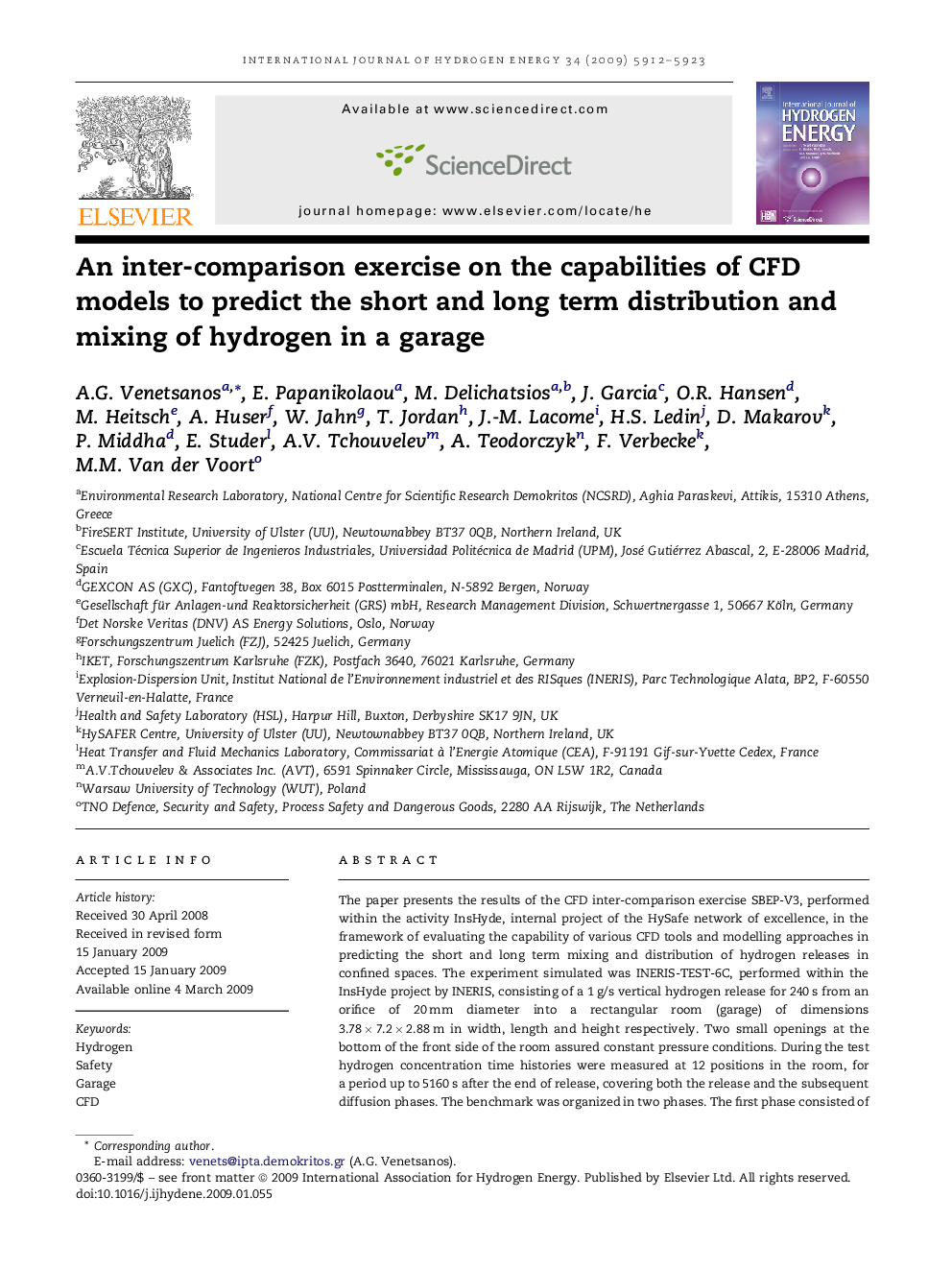| Article ID | Journal | Published Year | Pages | File Type |
|---|---|---|---|---|
| 1273725 | International Journal of Hydrogen Energy | 2009 | 12 Pages |
The paper presents the results of the CFD inter-comparison exercise SBEP-V3, performed within the activity InsHyde, internal project of the HySafe network of excellence, in the framework of evaluating the capability of various CFD tools and modelling approaches in predicting the short and long term mixing and distribution of hydrogen releases in confined spaces. The experiment simulated was INERIS-TEST-6C, performed within the InsHyde project by INERIS, consisting of a 1 g/s vertical hydrogen release for 240 s from an orifice of 20 mm diameter into a rectangular room (garage) of dimensions 3.78 × 7.2 × 2.88 m in width, length and height respectively. Two small openings at the bottom of the front side of the room assured constant pressure conditions. During the test hydrogen concentration time histories were measured at 12 positions in the room, for a period up to 5160 s after the end of release, covering both the release and the subsequent diffusion phases. The benchmark was organized in two phases. The first phase consisted of blind simulations performed prior to the execution of the tests. The second phase consisted of post-calculations performed after the tests were concluded and the experimental results made available. The participation in the benchmark was high: 12 different organizations (2 non-HySafe partners), 10 different CFD codes and 8 different turbulence models. Large variation in predicted results was found in the first phase of the benchmark, between the various modelling approaches. This was attributed mainly to differences in turbulence models and numerical accuracy options (time/space resolution and discretization schemes). During the second phase of the benchmark the variation between predicted results was reduced.
